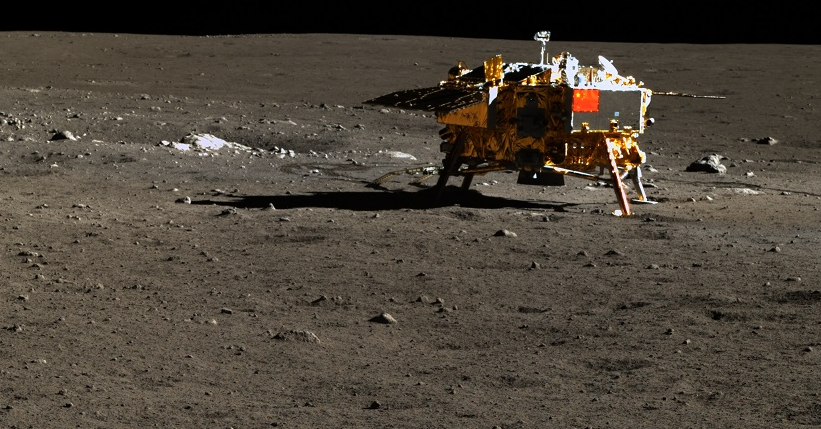China is pushing the boundaries of lunar exploration with its ambitious Chang’e 8 mission, scheduled for 2028. In addition to introducing cutting-edge technology and scientific experiments, the mission could potentially include a humanoid robot—a groundbreaking addition that signifies China’s increasing focus on robotics in space.
The Chang’e 8 mission aims to land near the moon’s south pole, a region of growing interest due to its potential water ice reserves and unique geological features. The mission will test advanced resource utilization technologies, such as 3D-printing lunar regolith (moon soil) into bricks, and conduct ecosystem experiments to simulate potential life-support systems for future lunar bases.
According to Wang Qiong, the mission’s chief designer, the spacecraft will feature a four-wheeled chassis topped by a humanoid-shaped structure, as shown in slides shared on Chinese social media platform Weibo. While the specific purpose of the humanoid design remains unclear, its inclusion highlights the innovative approach China is taking in its lunar endeavors.
Advanced Scientific Tools on Board
The Chang’e 8 spacecraft will build upon the successes of previous missions with its robust design and sophisticated payload. The lander, equipped with four sturdy legs for stability on uneven lunar terrain, will carry tools including:
- Cameras and telescopes for imaging and observation.
- A seismometer to study moonquakes and understand the lunar interior.
- A crane for deploying instruments and payloads onto the lunar surface.
Accompanying the lander will be a six-wheeled rover, reminiscent of the earlier Yutu rovers. This rover will carry advanced instruments such as a panoramic camera, lunar-penetrating radar, an infrared spectrometer, and tools for analyzing and storing samples. Together, these technologies will provide valuable insights into the moon’s composition and resources.
Paving the Way for the International Lunar Research Station
Chang’e 8 is a key precursor to China’s International Lunar Research Station (ILRS), a collaborative effort involving Russia and other partners, slated for construction in the 2030s. Along with the Chang’e 7 mission in 2026, it will help lay the groundwork for this ambitious project, designed to establish a sustainable human presence on the moon.
China’s Expanding Vision for Robotics
While humanoid robots for space exploration remain a novel concept, China’s broader robotics ambitions are rapidly gaining momentum. The government plans to mass-produce humanoid robots by 2025, aiming to dominate this emerging market by 2027. In January, Beijing launched a $1.4 billion state-backed robotics fund, followed by Shanghai’s announcement of a similar fund in July.
Robots are already playing a prominent role in China’s public and technological landscape. During the Hangzhou Marathon, two robots, Go2 and B2, served as cheerleaders and pacemakers, showcasing their versatility. Go2 entertained participants with music, safety tips, and even backflips, while B2 ensured runners maintained a steady pace. Both robots also demonstrated capabilities such as monitoring temperatures, detecting medical emergencies, and delivering supplies.
Tiangong: China’s Flagship Humanoid Robot
China’s humanoid robot advancements are exemplified by Tiangong, developed by the Beijing Humanoid Robot Innovation Center. Capable of walking at a steady speed of 6 kilometers per hour (3.73 mph), Tiangong combines visual perception sensors, 3D vision systems, and precision motion controls. This robot represents a significant step forward in embodied robotics, as it explores the interplay between body mechanics and artificial intelligence.
The Innovation Center has positioned Tiangong as its main platform for advancing robotics research, focusing on applications that bridge physical and cognitive challenges.
With Chang’e 8, China is not just exploring the moon—it’s redefining the possibilities of space exploration. Whether through the inclusion of humanoid robots or the development of resource-utilization technologies, the mission represents a bold step toward realizing the vision of a sustainable lunar presence. As these advancements unfold, they signal China’s determination to lead the next frontier of space exploration.











